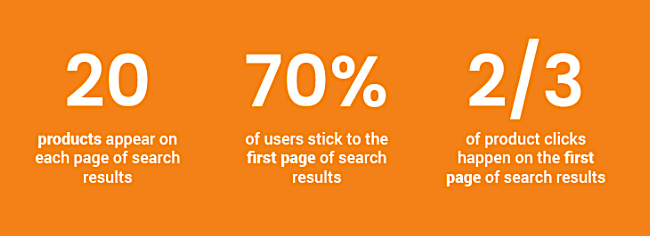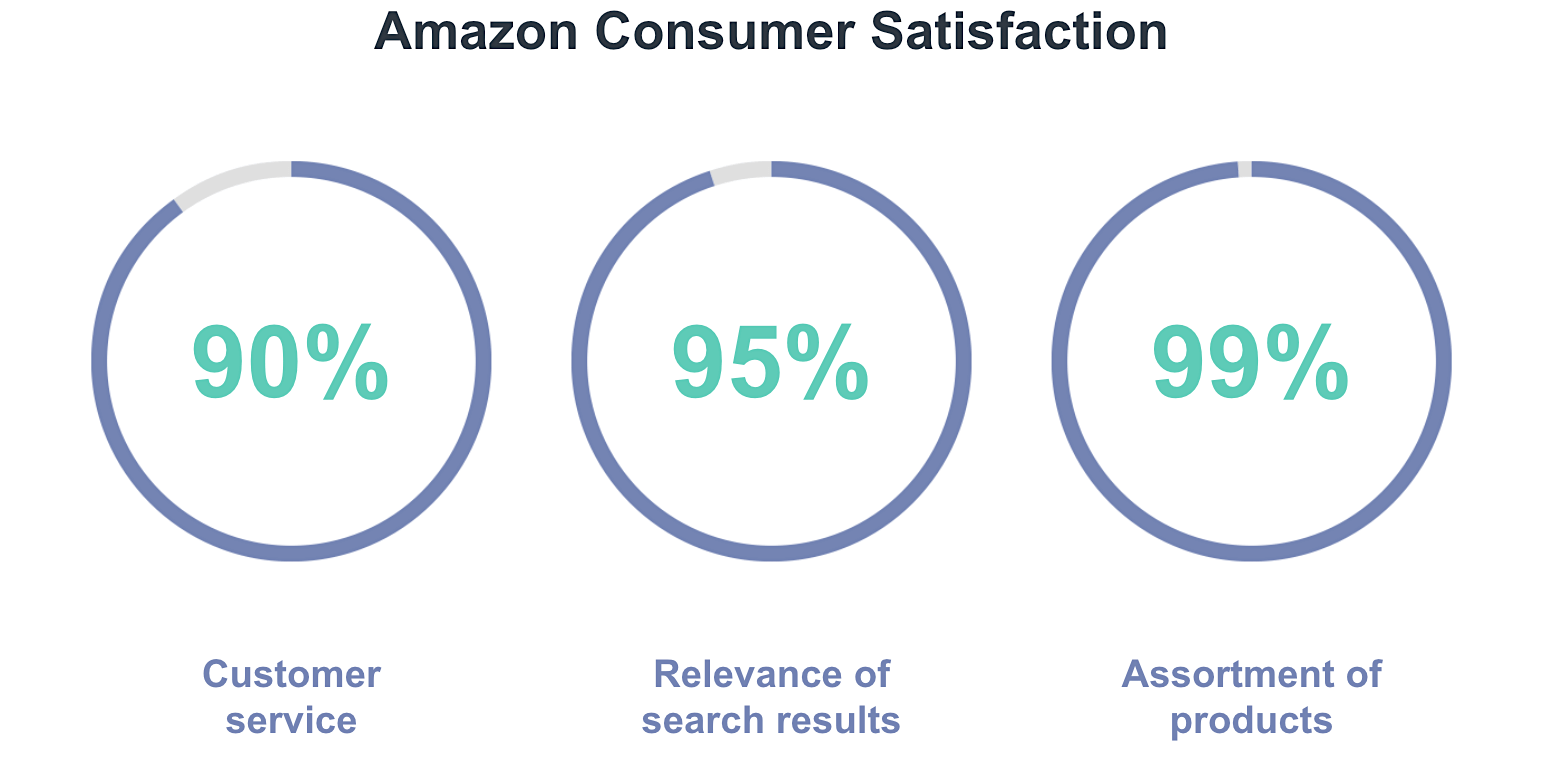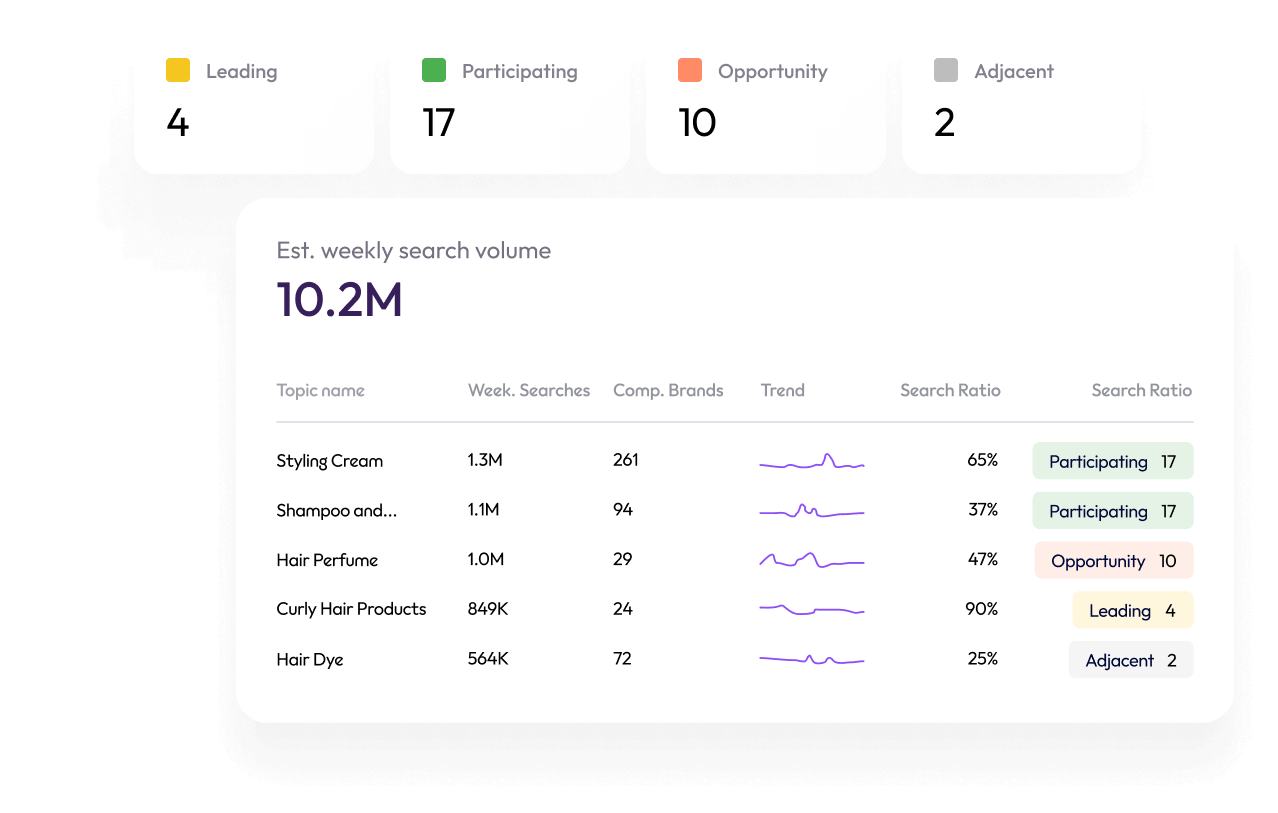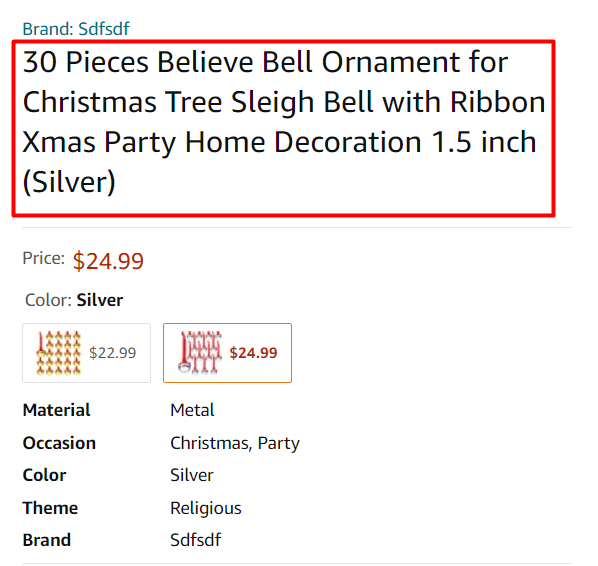Millions of products from millions of sellers compete for attention on Amazon. Without the right keywords, your product listings are invisible to potential customers, buried in the depths of the marketplace. Failing to optimize your keyword strategy can mean missed opportunities, lost sales, and a significant dent in your profitability.
Keywords are the backbone of your listings and how the search algorithm lets customers find the products they want. How critical are they? 70% of Amazon shoppers never venture past the first page of search results—meaning that if you’re not first, you’re last.
Embracing a more strategic approach to keywords can help your brand reach a broader audience and unlock the full potential of Amazon’s massive customer base. Here are twelve Amazon keywords tips that will help transform your listings into sales powerhouses.
Jump to:
What are Amazon keywords, and why are they important?
Amazon keywords are the words and phrases that shoppers type into the search bar when seeking products to purchase. These keywords act as the language of Amazon’s A10 search algorithm, determining what products appear in search results and their ranking.
Incorporating relevant keywords into your product listings signals to the A10 algorithm that your product matches specific search queries, which increases the likelihood that it will appear when shoppers search for those terms. However, keywords aren’t the only criteria used by the algorithm. The A10 has evolved to prioritize customer satisfaction and relevance, placing greater emphasis on organic sales, click-through rates, and conversion rates.
That said, using search engine optimization tactics like using relevant keywords in your product titles, descriptions, bullet points, and back-end search terms can significantly increase your product’s visibility. The more relevant and accurate your keywords are, the more likely they will attract customers actively searching for products like yours. This increased visibility, when paired with well-optimized listings, can lead to more conversions and boost your Amazon sales.
Benefits of Amazon Keywords
Strategically incorporating the right Amazon keywords offers many benefits for your brand, including:
- Increased Visibility – Rank higher in Amazon’s search results, getting your products in front of more potential customers.
- Higher Sales – More visibility leads to increased traffic and a higher likelihood of conversions.
- Improved Click-Through Rate (CTR) – Compelling keywords entice shoppers to click on your listings, signaling relevance to Amazon’s algorithm.
- Enhanced Brand Awareness – Consistent keyword use strengthens brand identity and recognition.
- Competitive Advantage – The right keywords help you outrank competitors to capture market share and establish your brand as a leader.
- Data-Driven Insights – Tracking keyword performance allows you to understand customer behavior and refine your strategy.
12 Amazon Keywords Tips to Increase Your Sales
Here are a dozen proven ways to upgrade your keyword strategy and get your products in front of more Amazon customers:
Keyword Research Tips
1. Know Your Target Audience on Amazon
Understanding your ideal customer is the foundation of effective keyword research. The key is to create detailed buyer personas so you can identify the specific terms they use to search for products like yours. Answer questions like:
- What are their interests and pain points?
- What are their demographics and shopping habits?
- What problems are they trying to solve with your product?
Diving deep into their online behavior will help you uncover hidden keyword opportunities.
2. Employ Competitive Intelligence
Knowing what your competition is up to is just as important as knowing your customers. It’s critical to analyze your competitors’ keyword strategies to identify gaps and opportunities.
Noogata’s competitive intelligence provides valuable insights into your competitors’ top-performing keywords. These actionable insights empower you to modify your strategy and capture untapped market share. Then, you can differentiate your listings by targeting keywords your competitors may be overlooking, leading to increased visibility and sales.
3. Use Keyword Tools that Focus on Amazon
Generic keyword research tools might not provide the accurate search volume and relevance data specific to Amazon’s A10 algorithm. Invest in tools that specialize in Amazon keyword research to ensure you’re targeting the most effective keywords based on current marketplace data.
These tools will provide insights on search volume, competition, and relevancy that general tools might miss, as well as help you track your keyword performance over time.
General Keyword Tips
4. Use Keywords Relevant to Your Listing
Optimize for search intent by choosing keywords that accurately reflect your product’s features, benefits, and the specific needs of your target audience. Don’t waste valuable space with irrelevant keywords that won’t attract the right customers. Strive for a balance between broad and specific keywords to maximize your reach while maintaining relevance.
5. Subjective Keywords Don’t Work
Avoid using subjective keywords like “best,” “top-rated,” or “amazing.” Focus on descriptive, objective terms that accurately reflect your product’s features and benefits. Remember, shoppers are looking for specific solutions, not vague superlatives, and using objective terms will help you connect with their needs.
6. Incorporate Seasonal Keywords
If your products are seasonal, be sure to incorporate relevant seasonal keywords into your listings during peak demand periods. Stay ahead of the curve by planning your seasonal keyword strategy well in advance, ensuring your products are discoverable when customers are actively searching for them.
Listing Keyword Tips
7. Optimize Your Listings for Keywords
Incorporating your target keywords naturally into your product titles, bullet points, descriptions, and back-end search terms is essential for optimal visibility on Amazon. However, avoid keyword stuffing, which can negatively impact your ranking. To ensure strategic distribution, consider these Amazon keywords tips:
- Include your most important keywords in the product listing title and the first few bullet points, since these carry the most weight in the A10 algorithm.
- Integrate keywords seamlessly into your content, creating a readable and engaging experience for potential buyers.
- Utilize the back-end search terms field to include any additional and relevant keywords that don’t fit naturally in your product description.
- Avoid overusing keywords because this can trigger Amazon’s algorithm and negatively impact your ranking. Aim for an optimal keyword density of 1-2% throughout your listing.
The goal is to optimize your listings for both the A10 algorithm and the human eye. Striking a balance between keyword optimization and readability allows you to create listings that are discoverable and engaging for potential customers.
8. Take Advantage of Backend Keywords
Amazon’s back-end keywords are hidden from customers but visible to the A10 algorithm. Utilize this space to include additional relevant keywords and variations that you couldn’t fit naturally into your product listing. Be sure to include misspellings, synonyms, and related terms to maximize your reach, but avoid redundancy with your front-end keywords.
9. Long-tail Keywords Have Less Competition
Instead of focusing solely on broad, high-volume keywords, try incorporating long-tail keywords (phrases with three or more words) into your strategy. Long-tail keywords usually have higher conversion rates and lower search volume due to their specificity. They attract more qualified leads who are further along in the buying process, increasing the likelihood of a sale.
To identify long-tail keywords, consider using Amazon’s autocomplete feature, analyzing customer reviews and questions, or utilizing keyword research tools that specialize in long-tail keyword discovery. For instance, instead of targeting “shoes,” try “men’s running shoes for flat feet.”
Specialized Keyword Tips
10. Follow the Keyword Trends
Consumer interests and search behaviors are constantly evolving. Monitor emerging trends and adjust your strategy accordingly to keep ahead of your competition and maintain product visibility.
Noogata’s Search Trendspotting can help you identify rising search terms, allowing you to optimize your listings proactively and stay ahead of the competition. This ensures your products remain relevant and visible as consumer interests evolve, giving you a competitive advantage.
Other ways to identify emerging trends include monitoring industry news, social media conversations, and competitor activities, as well as tracking keyword search volume fluctuations over time.
11. Win with Amazon PPC Keywords
Keywords aren’t just crucial for your product listings. Amazon Pay-Per-Click (PPC) advertising can complement your organic keyword strategy. Bid on relevant keywords to get your products featured prominently in sponsored search results.
Strategic bidding can significantly increase your product’s visibility and drive more targeted traffic, but it requires careful management to maximize your ROI. Try these tips:
- Use automated tools to streamline the process and optimize your budget and campaigns.
- Focus on high-converting keywords with lower competition to get the most out of your PPC budget.
- Experiment with different ad formats (Sponsored Products, Sponsored Brands, Sponsored Display) to see which ones perform best for your products.
12. Monitor Your Keyword Performance and Adjust
Regularly monitor your keyword performance to identify which are driving the most traffic and conversions. Adjust your keyword strategy based on this data to continually improve your rankings. Analyzing your keyword data allows you to discover areas for improvement and capitalize on high-performing terms to boost conversions.
Increase Sales with Amazon Keywords Tips and Noogata
Mastering Amazon keywords requires a deep understanding of your target audience, the A10 algorithm, and the evolving marketplace. These twelve proven tips can transform your approach and unlock a new level of visibility, traffic, and sales.
Noogata empowers eCommerce teams to effortlessly uncover new Amazon keyword opportunities, track keyword trends, and outperform the competition with its advanced keyword research and competitive intelligence tools. Harnessing data-driven insights allows you to optimize listings with precision, automate time-consuming tasks at scale, and get a comprehensive view of your market landscape.
To see how Noogata can revolutionize your Amazon keyword strategy, schedule a free demo today.








